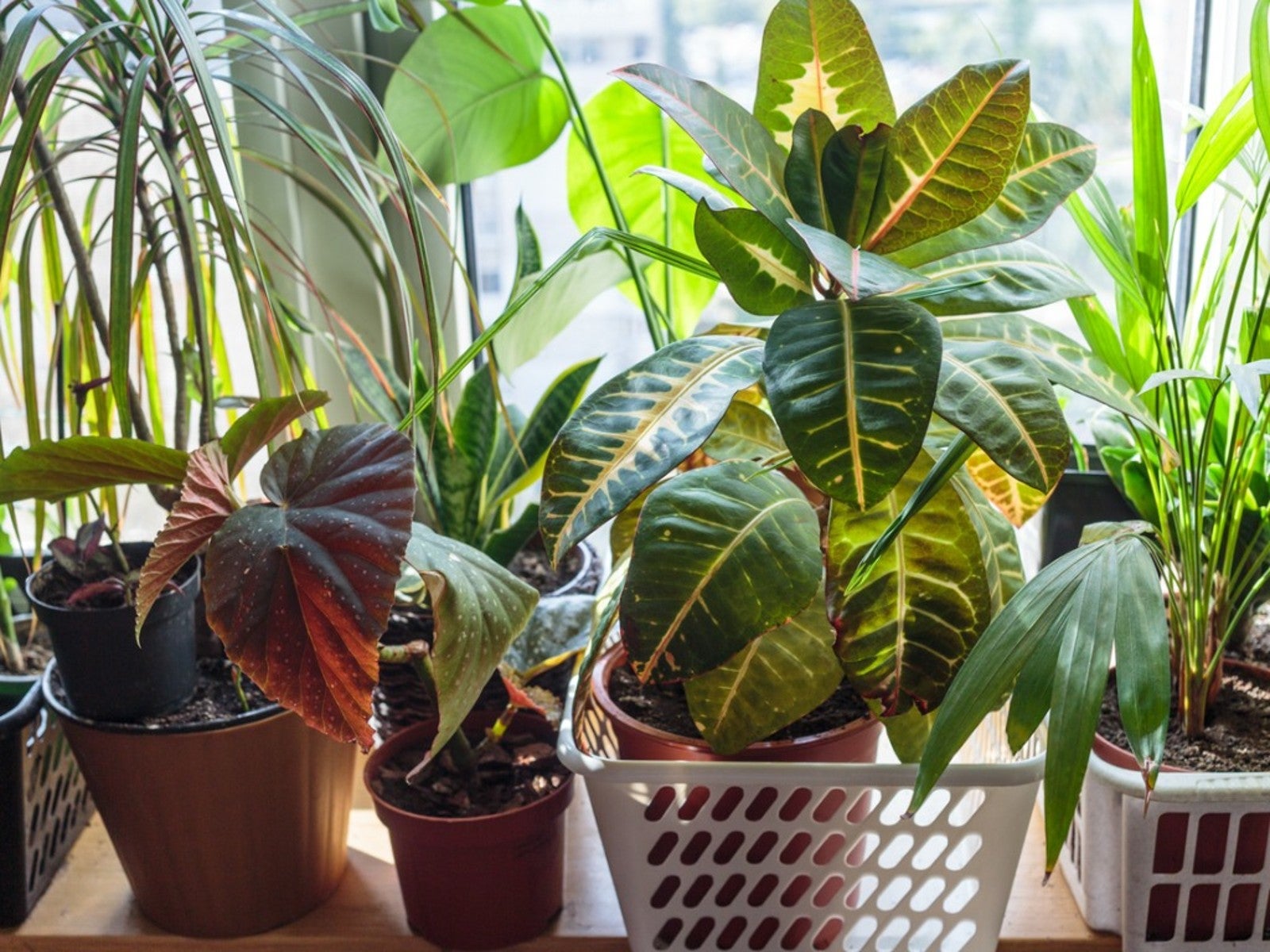Overwintering Tropical Plants Indoors


You might not be able to live in the tropics, but you can enjoy the atmosphere with the right plants. Knowing how to keep tropical plants alive in winter ensures you get to enjoy them year-round. If you are able to make room indoors and can create the right conditions, it is possible to overwinter plants that are more exotic in nature. If you understand your particular plants’ needs, it’s easy to keep them going.
Can Tropical Plants Survive Winter?
Tropical plants can only survive outdoors in winter under very specific conditions of temperature and sunlight. Depending on where your garden is and the local climate, some plants might survive outside with some extra protection.
In most locations, you’ll need to bring tropical plants indoors. Some you can keep inside as houseplants. For others, it’s better to find a place where they can go dormant until the next spring.
How to Care for Tropical Plants in Winter
With tropical plants placed in the four-season garden, you have a choice: Let them be annuals, or try to care for them all winter.
You also have two choices when it comes to how to overwinter tropical plants. The best choice depends on the type of plant:
- Trim back and store in a dormant state plants that grow from bulbs, corms, or rhizomes. This includes canna, elephant ear, and caladium.
- Keep soft-stemmed tropicals as houseplants in a sunny spot with added humidity. This includes tropical hibiscus, umbrella trees, palm trees, bird of paradise, and cordyline.
- Some plants can go either way. For instance, if you bring mandevilla indoors, it can be a houseplant but will lose a lot of leaves. You can also trick it into dormancy by cutting it way back and storing with dormant bulbs.
Bringing Tropical Plants Indoors for Winter Houseplants
For those plants that do not need to be stored in dormancy, find a spot inside with good sunlight. If you don’t have enough natural light by a window, use artificial lighting to supplement it.
Your tropical plant will also need warm temperatures and adequate humidity, which can be difficult indoors in winter. Avoid drafty windows and doors. Use a pebble tray or mist the plant regularly to keep humidity levels high.
Gardening tips, videos, info and more delivered right to your inbox!
Sign up for the Gardening Know How newsletter today and receive a free copy of our e-book "How to Grow Delicious Tomatoes".
While your tropical houseplant will not go totally dormant in these conditions, it should stop growing. Water it less often than you would during summer and stop fertilizing until early spring when new growth appears.
Another important consideration when bringing plants indoors is the possibility of pests coming in with them. Check your plants very carefully for any insects and treat the plant or remove the pests by hand.
Overwintering Dormant Bulbs
For bulbs, corms and tubers, you can save the underground portion of the plant through the winter and put it back in the soil in spring.
Let the foliage die back in fall and then dig up the tuber or other structures in the soil. Use a garden fork to gently pry it up without causing damage. Trim back any foliage left and leave it in a safe, protected place to dry. Check for pests before bringing the bulbs inside.
Once it’s totally dry, brush excess dirt off the tuber and put it in some type of breathable, dry storage container. A brown paper bag is adequate, but you can also use an open plastic tote or a wooden crate. Fill the container with dry newspaper, wood shavings, or peat, and situate the tuber or bulb in its nest.
Store the dormant plant in a cool, dry place, like a garage or cellar. The temperature should remain roughly between 32 and 55 degrees F (0 to 13 degrees C). You can repot and start the growth indoors before the last frost of spring or plant the bulbs outside once the soil is at least 65 degrees F (18 C).
Caring for tropical plants in winter requires some basic knowledge but is doable for most gardeners. If your plants drop leaves initially, don’t panic. They won’t be as happy indoors as outside, but with the right care they should bounce back to life in spring.

Mary Ellen Ellis has been gardening for over 20 years. With degrees in Chemistry and Biology, Mary Ellen's specialties are flowers, native plants, and herbs.
-
 Never Plant Seedlings Until They Pass These 3 Simple Tests
Never Plant Seedlings Until They Pass These 3 Simple TestsDon't be over-eager to transplant seedlings into the garden before they are ready. These quick and easy checks will help ensure flourishing plants.
By Mary Ellen Ellis
-
 Grow ‘Karl Rosenfield’ Peony Plants For The Ultimate Frilly Border Beauties And Cut Flowers
Grow ‘Karl Rosenfield’ Peony Plants For The Ultimate Frilly Border Beauties And Cut FlowersFor frilly double magenta peony petals infused with a heady fragrance, grow ‘Karl Rosenfield’ peony plants. Here’s how to cultivate the ultimate plushy blooms
By Tonya Barnett